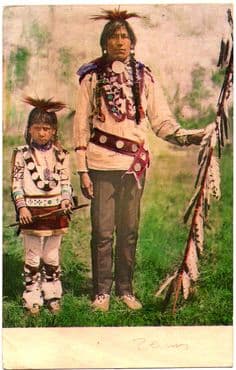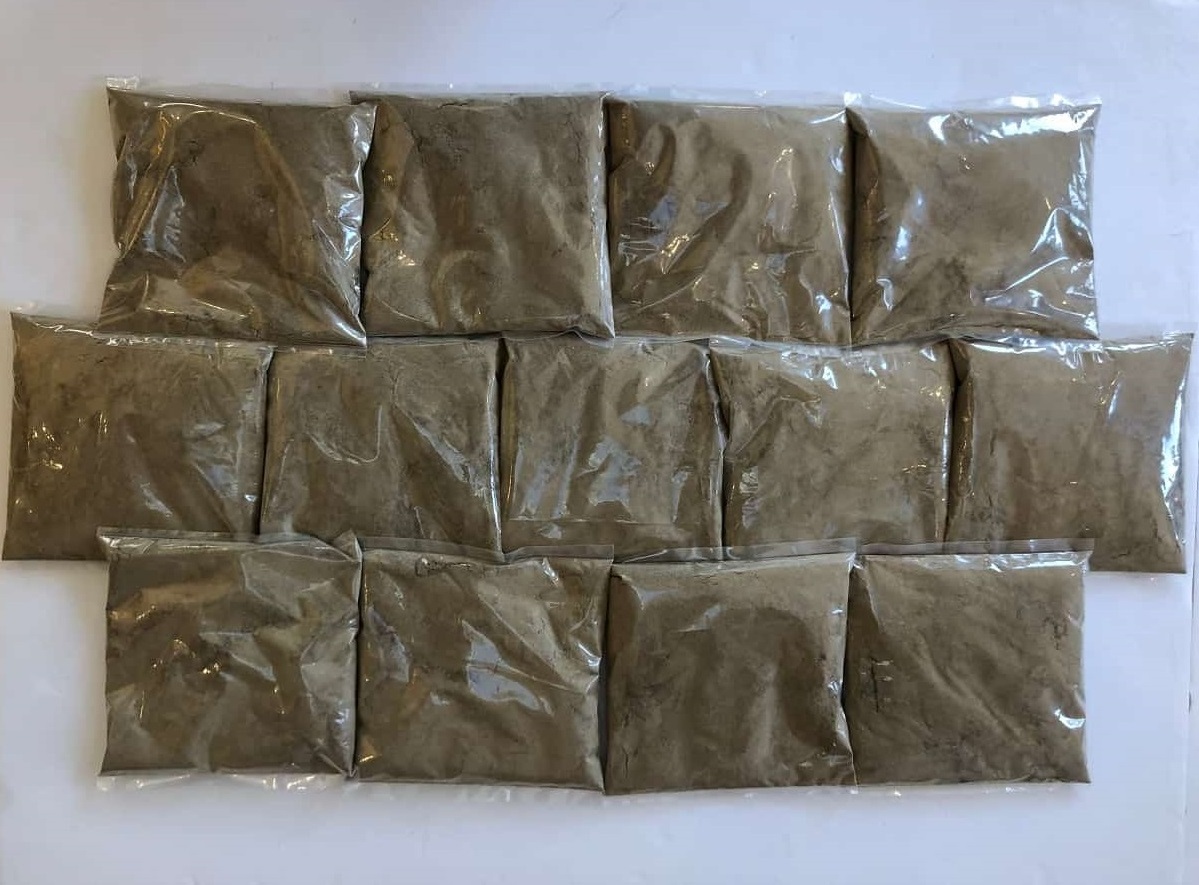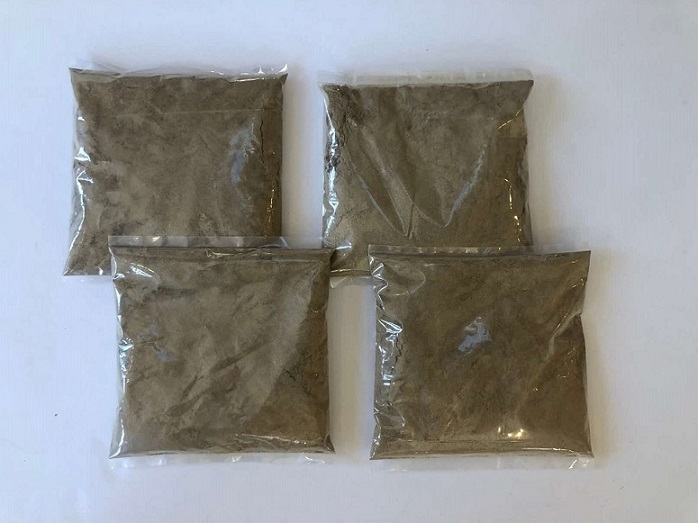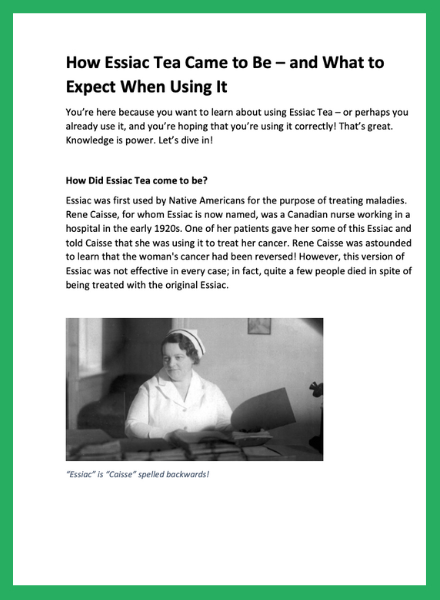- Home
- Why Us: 6 reasons
- Eight Herb Essiac
- Ojibway
|
||
| site search by freefind |
The Ojibway and Essiac: A Long History
The Ojibway and essiac connection goes way back. The Ojibway have a strong connection to essiac tea and without them, essiac may not be available for all to use and enjoy today.
 The Ojibway have so much to teach us about the history of essiac tea.
The Ojibway have so much to teach us about the history of essiac tea.The Ojibway live stretching for thousands of miles from southeastern Ontario to across the upper Great Lakes country of the United States and Canada. Native to their culture is the use of herbs as medicine. Essiac is no exception.
The Ojibway are classed as one people in the Algonquian linguistic family, but they have several alternate regional names, and are also divided into over a hundred separate reservation communities. They are well known for their expertise in herbal medicine, including being in possession of the much-heralded essiac tea formula used widely worldwide. There are approximately 200,000 Ojibwas today. The majority of them live in Canada.
There has been a variety of forms of their name over history, which can make studying their history confusing. Depending on its division into syllables, the Ojibwa name has been interpreted as a reference either to the puckered toe of the Ojibwas' distinctive moccasins, or to their use of glyphs to inscribe historical and religious information as well as simple messages on birch bark or rock surfaces. The name has no standard spelling in English and has changed into Chippewa according to the U.S. government's recognition of them. The French first encountered Ojibwas at the falls of the St. Mary's River, which is the connecting link between Lake Superior and Lake Huron at the eastern end of the Upper Peninsula of Michigan. Because they were associated with this location, Ojibwas were known to the French as "People of the Falls," or Saulteurs. The people in the western part of Canada still refer to them as the Saulteaux.
Click here to learn more about the history of the Ojibway and essiac tea.
Click here for a video about the Ojibway
The Rest of the Story of the Ojibway and Essiac: Rene Caisse
In the early 1920s, Rene Caisse was employed as head nurse a hospital in a northern Ontario town. While on duty, Rene encountered an elderly lady and noticed that one of her breasts had a lot of scar tissue on it. Upon questioning the woman, she learned that she had breast cancer many years prior. The woman explained that she had met a Indian medicine man who told her he could cure her cancer. She said that she had no money at that time for surgeries so she went to see the Indian. He showed her certain herbs growing in the area and told her to pick them and make a tea and to drink it every day. Her cancer never came back. Right after that time, Rene named the formula "Essiac" after her own last name spelled backwards. So this is the story of how the ojibway and essiac are connected!
Purchase your own supply of essiac tea today. It's the same essiac Rene Caisse used.
Essiac tea takes just 10 minutes to prepare once every two weeks. It costs less than $1 per day to use.
Click here to order our most popular size of essiac: the six month supply at aggressive/improvement of health serving size. It lasts 9 months at the maintenance serving size.
If you'd rather start with a smaller supply of essiac, you can purchase it here. This lasts two months at the aggressive/improvement of health serving size, or three months at the maintenance serving size.
- Home
- Why Us: 6 reasons
- Eight Herb Essiac
- Ojibway
Sign up for our Newsletter and Get Your Free Gift Now
We are rebranding our look and feel! Sign up for the Essiac Newsletter here, on our newer site, GenuineEssiac.com:
➡️ Sign Up Now
We promise that we will never use your contact information for purpose other than to send you the Newsletters. You will maintain the right to unsubscribe from these e-mails at any time. We never share your information with third parties.






